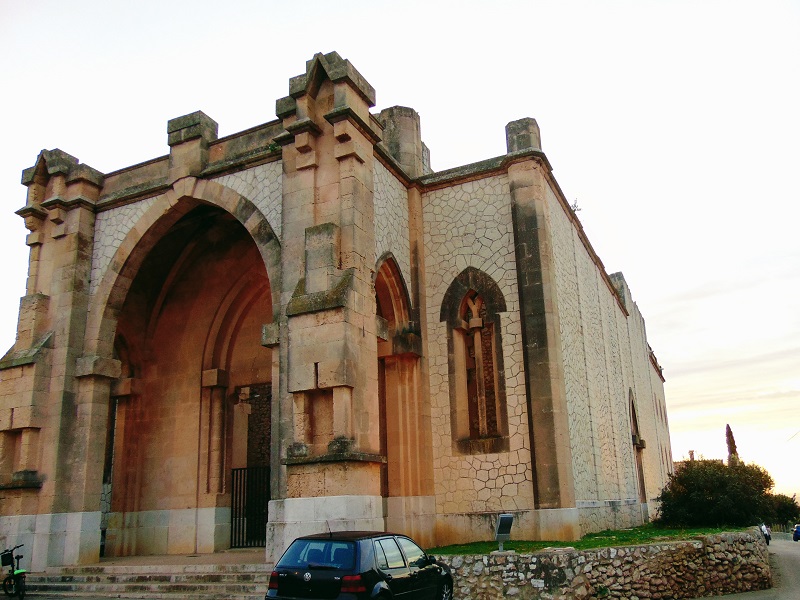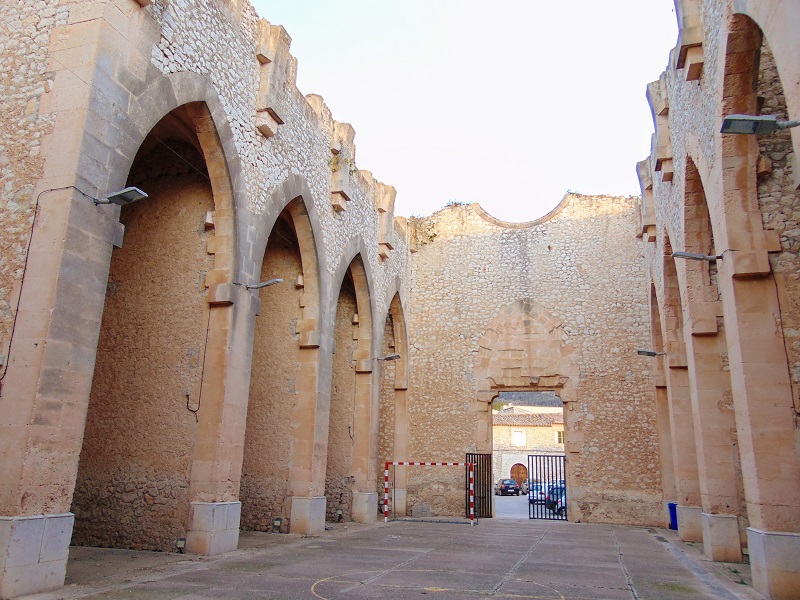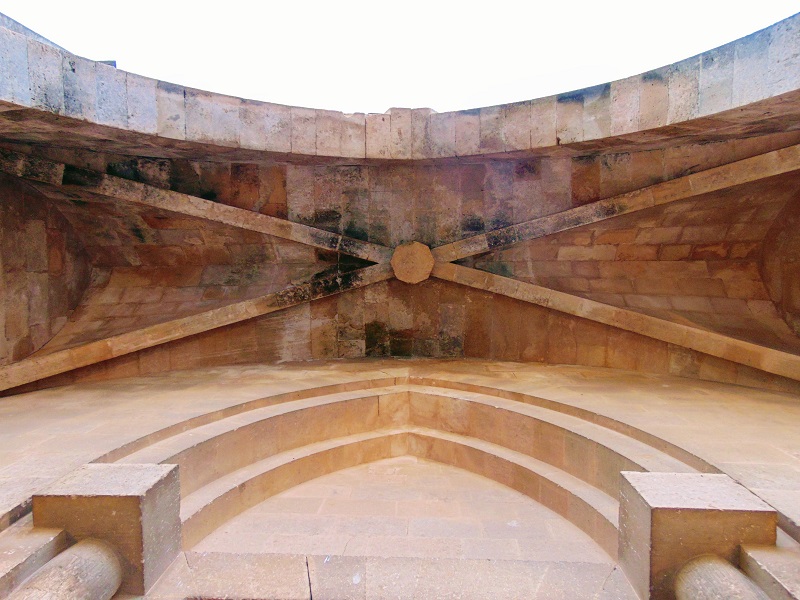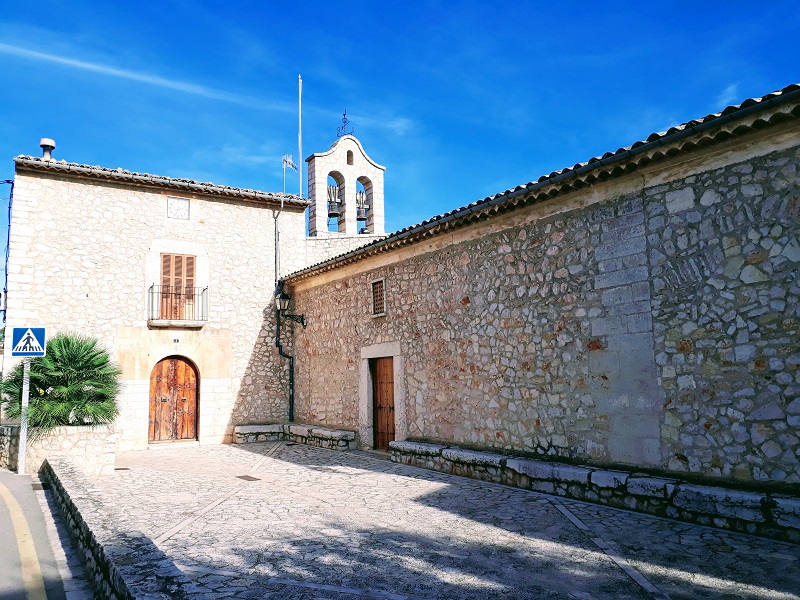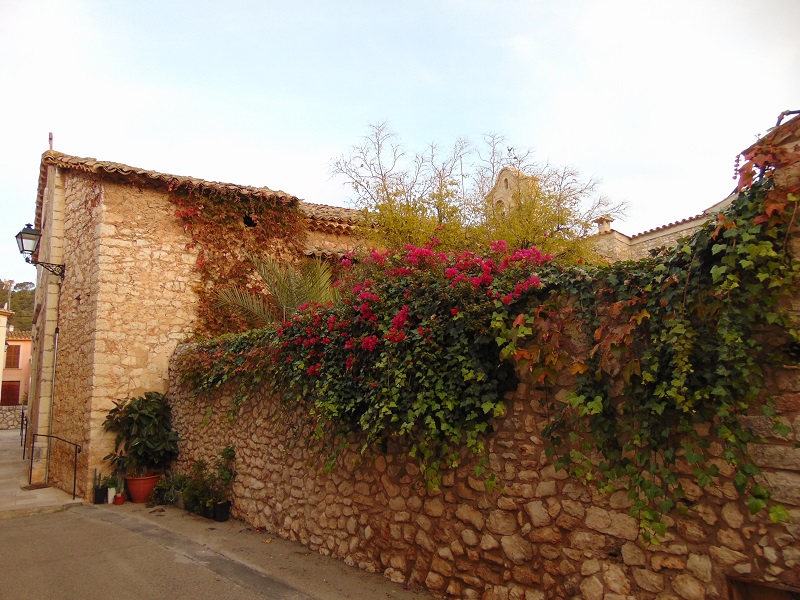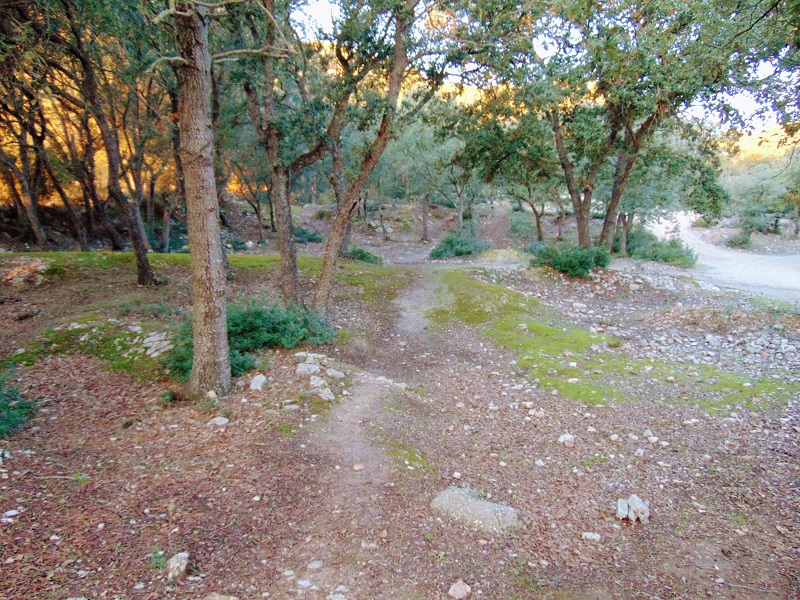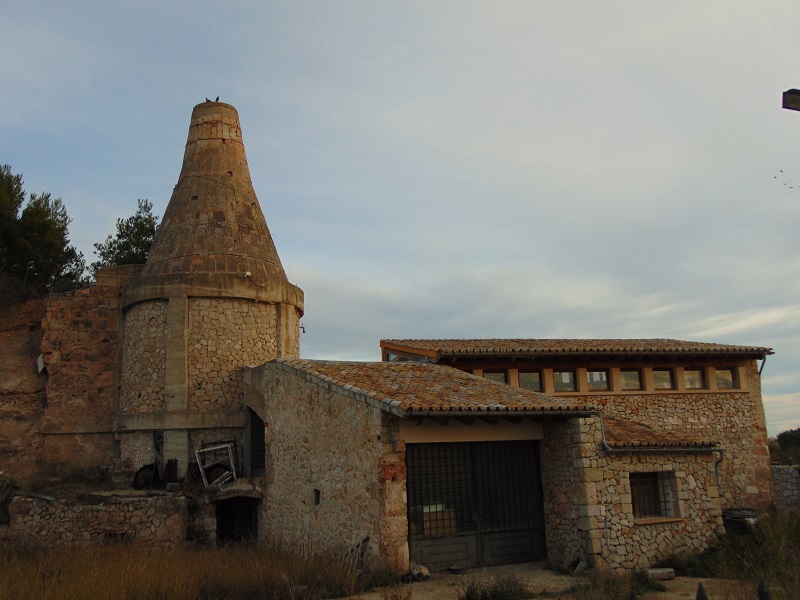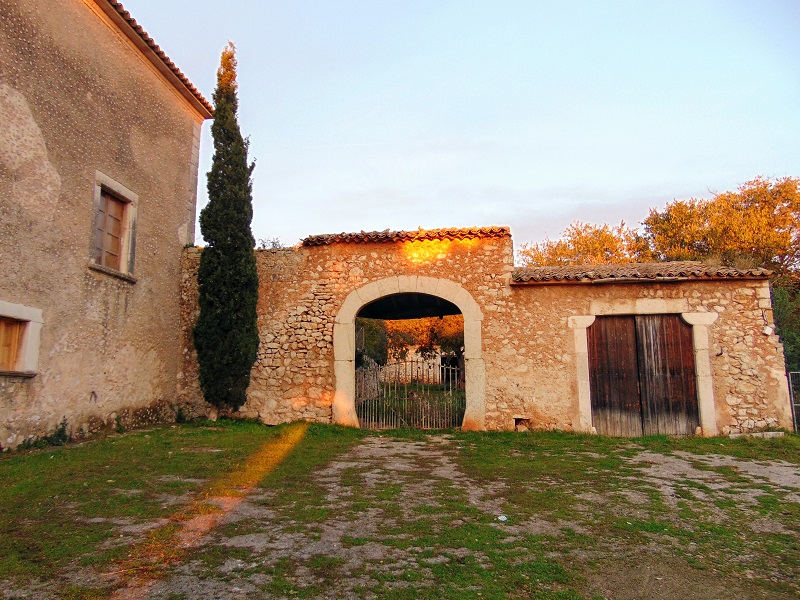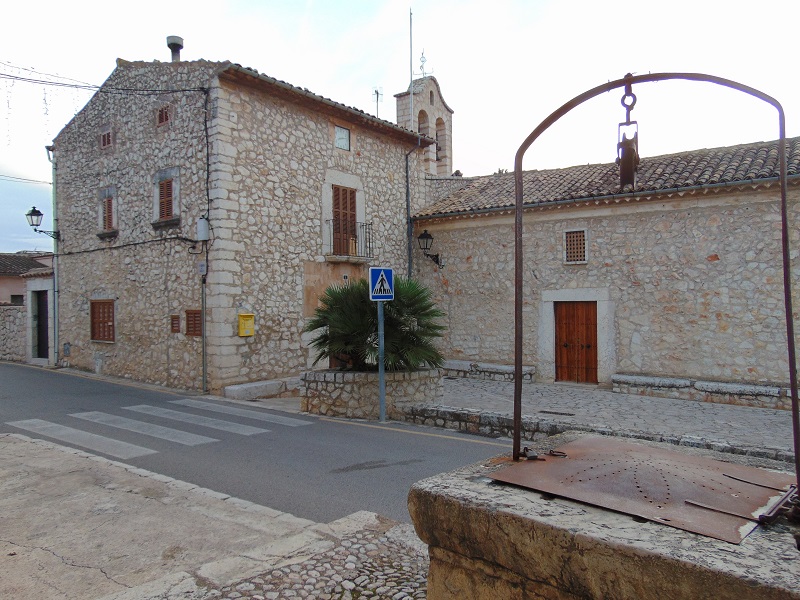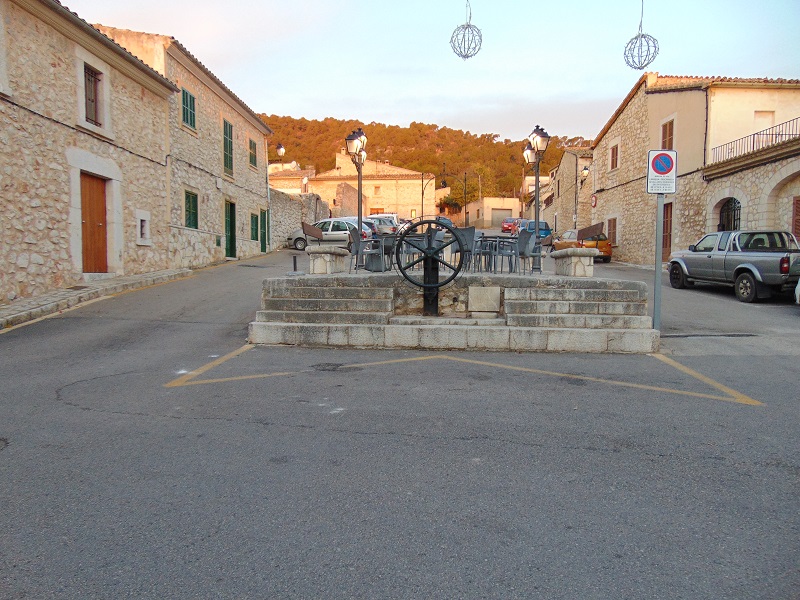Biniamar
From the time in which the Arabs controlled Mallorca, we have few written documents left, however there is enough to know that in Biniamar there were some houses. According to the Alcover-Moll dictionary, the name of Biniamar has an Arabic origin, probably from bani ahmar, "children of the red" or from Bani Ammar own person's name according to Asin Top. What we know is that in the years that followed the conquest of Mallorca there were several establishments of Saracen houses or that "they were of the Moors", located in the farmhouse of Beniamar.
Biniamar is one of these unknown towns even for the same Majorcans, but that surprises with its constructions: fincas, the small church of Santa Tecla or the unfinished New church since it has no roof and is currently used in popular celebrations.
Source: ROSSELLÓ VAQUER, Ramon (2000) Història de Biniamar.
Village images
Weekly market, fairs and celebrations
- Weekly market
Description: sale of fruit and vegetables, legumes, flowers and plants, clothing and footwear, etc.
Day: Tuesdays, from 08:00 to 13:00
Place: Plaça Major (Main Square)
- Fairs and celebrations
17th January (Sant Antoni)
23rd September (Santa Tecla)
Places of interest
Sant Pau Street, 5.
We can see a large building, with clear neo-Gothic stylistic references. The plant is defined by a central ship with absís and cruise. It has three side chapels per side, located between the buttresses. Externally, it is a simple volume, of polygonal stone walls with openings framed with pieces of marés. It also stands out in the large open atrium that precedes the entrance to the church, covered with an ojival turn. The access portal is also ojival.
This unfinished building, today used as a sports court and stage for cultural events, had to be the new church of Biniamar. It was started at the beginning of the 20th century thanks to a subsidy obtained by the politician Antoni Maura, then president of the Spanish government, who had links with Biniamar. The Guillem Reinés project was characterized by the use of elements inspired by the Gothic, such as the pointed arch or the crossing of the cross. When the cover of the central nave (1909) was already reached at the beginning, the works were halted due to a lack of funding.
Plaça Major (Main Square).
It is a very simple construction, rectangular in shape, with irregular stone walls. It has a double slope cover and a bell tower with two bells. The interior shows some influence of the first Baroque in the use of the canyon turn. The temple is dedicated to Santa Tecla, who is guarded a relic that is venerated for during her celebrations, on September 23. This devotion is probably due to the fact that in the post-conquest cast, Biniamar corresponded to the pabord of Tarragona, the city of which patron saint Tecla is.
This small church was built in the first half of the 17th century. Two centuries later it was restored and expanded.
At the southwestern end of the term, bordering the counties of Mancor de la Vall and Lloseta. It is reached by the road that begins at the end of the street of the Count of Biniamar and borders the houses of Son Ordre. After three hundred meters, turn left. The recreational area is about 800 meters away.
The comuna of Biniamar is a mountainous massif that reaches 476 meters of altitude with the rock of its ‘’Lady’’ as the highest summit and extends over more than 180 quartered (131 ha.). Comellars and ullastre plants with pine cover predominate within the area, while the holm oak is located in the northern part of the communal. At the eastern cliffs to the north, the endemic breakwater communal of Violeta de Peñasco can be located. The floristic catalog of this communal space is 173 species. It has a recreational area very well equipped in a holm oak of great beauty, surrounded by sitges of coal and lime kilns. It also highlights an ancient canalization. Leftovers from the source were taken to the cistern of the Plaça to Biniamar.
The comuna of Biniamar, together with the one in Caimari, are the only two communal lands that have survived the many that the municipality of Selva had since the 14th century and that affected Massanella, Biniarroi, Mancor and Moscari. The first documentary references of the comuna of Biniamar date back to 1323. Later we know that in 1560 Biniatzent was attached to the communal lands. Without as many vicissitudes as those suffered by the comuna of Caimari, the exploitation of the comuna of Biniamar (based mainly on the production of firewood, acorns, carobs, and grass) saw the centuries go by until 1941 the comunas of Biniamar and Caimari were declared of Public Utility. In 1981, the so-called hermitage of Reconciliation was blessed.
Biniamar-Mancor de la Vall road, km 1’8 (Son Bassa) and 3 (Can Sirena) and Inca-Mancor de la Vall road, km 2’2 (Can Baltasar).
These are three factories that used coal from the Selva mines as fuel to convert limestone into lime. The ovens of Can Sirena and Son Balsa have a conical structure while the one of Son Baltasar is circular. They are built with stones and mortar, topped by pieces of Marés placed vertically. The first two retain four external reinforcing pilasters and the furnace entrance, although in the Son Balsa there are already concrete elements.
Those of Son Balsa and Can Sirena have undergone modifications in order to be used as a house, with the conservation of the outer structure of the oven. The oven of Can Baltasar was the last one to be built, in the middle of the 20th century.
Vent Street, 9.
These stately-looking houses are located near the village center, on the edge of the road that leads to the comuna of Biniamar. The main facade, baroque, is structured by three vertical axes and consists of the ground floor, noble floor and porches, all topped with a large molded cornice. It is necessary to highlight the presence of a foreign portal of a semicircular arch of stone, through which you can access the lobby where there are two large carpal arches, also of the same material, open towards the load-bearing walls of the main body. Crossing the lobby you enter the courtyard, where the staircase that leads to the noble floor stands out, with a spectacular turn that supports it and the painted tiles that finish off the ledge on one side of the patio. Inside the noble floor, of great simplicity of lines, the hall and the old dining room can be highlighted, where there is a Soller marble basin crowned by a heraldic element where the date of 1710 is recorded. As for the attached dependencies, we must highlight the old mill, the oil mill space.
The current configuration of the houses seems to date back to the late seventeenth or early eighteenth century, according to the dates contained in the cistern (1698) and on the outer portal (1709), although some openings on the ground floor date back to earlier times. The year 1687 belonged to Mr. Nicolau Móra Mulet, doctor of the Royal Council of His Majesty. The property was dedicated to the cultivation of olive trees, the oil produced was made in the same mill houses.
The cistern of the main square is located at No. 6 and 7, while the cistern of sa Quintana is at the square of the same name.
These are two deposits of similar characteristics and dimensions. While the cistern of the Plaza is polygonal in shape, sa Quintana is rectangular. The dimensions range between 7’5 and 10 m in length and 4 and 5 m in width. The depth varies between four and five meters and the two are covered with a back arch. Outside, the two reservoirs have a stone neck. In the case of the cistern of the Plaza, the neck is square (121 cm) and at its edge, the other neck is intuited, already blinded. On the other hand, the neck of the cistern of sa Quintana is circular (120 cm in diameter) and contains an inscription: “YEAR 1898”. In both cases, the pulley is held by iron bars. A sa Quintana we have to highlight the two stone pikes.
The cistern of the Plaza was built between 1823 and 1824. It was filled with water from the fountain of Patró de Biniatzent through a ditch. On the other hand, the deposit of sa Quintana began in the last years of the 19th century and its construction was carried out by Bernat Oliver, a member of a large number of stonecutters. The neck and pit of the cistern would be the work of Master Gabriel Nicolau de Biniamar. Approximately in 1990 one of the two original necks of the cistern of the Plaza was condemned and the set of sa Quintana was fixed. In 1998 the centenary of the cistern of sa Quintana was celebrated and a commemorative plaque was placed with the following inscription: “Well of sa Quintana. Centenary 1898-1998”.
On top of the sa Quintana square.
From this steep street we will highlight the facades of No. 1, 3, 5 and 6, in addition to the corner that is past No. 5. The most spectacular portal corresponds to the house of No. 1º to 3º, in addition to the portal we find two old windows and one has been closed. The portal of No. 5 has been widened, while that of No. 6, operated in five pieces, is completed with two windows and the same threshold of the portal. No. 5 opens an alley on the left that ends in a square surrounded by buildings of interest. To our right we see two houses with a passage way and a well, with a stone neck. Above all, the harmony of the whole stands out - everything and the state of abandonment it suffers but it is also worth noting the portals of the two buildings. On our left side, we find the remains of what was the oven of the teulera of Can Gall. You can still discern the pillars of the portal and it is possible to observe the inside of the oven. On the facade we find another house attached to another teulera, still active, the teulera de Can Gelat.
Data on the teuleras of this street are unknown, although it is easy to think that they were built throughout the 19th century. As for the houses on Cemetery Street, they could date from the 18th and 19th centuries.
Weekly market, fairs and celebrations
- Weekly market
Description: sale of fruit and vegetables, legumes, flowers and plants, clothing and footwear, etc.
Day: Tuesdays, from 08:00 to 13:00
Place: Plaça Major de Biniamar
- Fairs and celebrations
17th January (Sant Antoni)
23rd September (Santa Tecla)

